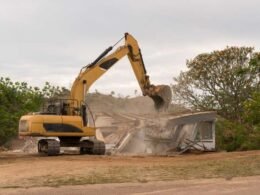In an age of digital overload and screen fatigue, physical tools that inspire creativity and productivity are making a powerful comeback. One such innovation is the glass dry erase board, a sleek, durable, and highly functional alternative to traditional whiteboards.
This article explores the rise of glass boards as essential tools for modern workspaces, classrooms, and home offices. We’ll break down their advantages, real-world applications, and how they compare to standard whiteboards — helping you understand why they’ve become a staple in brainstorming, planning, and visual communication.
Defining Glass Dry Erase Board
A glass dry erase board is a writing surface made of tempered safety glass, designed to function as a modern whiteboard. Unlike conventional melamine or porcelain whiteboards, glass boards are stain-resistant, ghost-free, and offer a contemporary appearance.
Key Features:
- Made from tempered or low-iron glass for clarity
- Compatible with dry-erase markers and magnetic accessories (if magnetic)
- Frameless or framed designs for different aesthetic preferences
- Often wall-mounted or freestanding for flexible use
Visual Thinking – Why It Still Matters in a Digital World
Before diving deeper into glass boards, it’s important to understand the underlying principle that makes them so powerful, visual thinking. Studies show that humans process visual content 60,000 times faster than text. Whether you’re mapping out ideas, teaching concepts, or tracking tasks, visualizing them externally improves memory retention and cognitive engagement.
Glass Boards Encourage:
- Mind mapping and brainstorming sessions
- Collaborative planning in meetings
- Agile workflows like Kanban or Scrum boards
- Project visibility in shared spaces
Glass Board vs. Traditional Whiteboard Comparison
| Feature | Glass Dry Erase Board | Traditional Whiteboard |
| Stain resistance | High (ghosting-free) | Prone to staining over time |
| Aesthetic appeal | Modern, frameless, sleek | Basic, utilitarian design |
| Durability | Tempered glass is scratch-proof | Susceptible to dents/scratches |
| Magnetic compatibility | Available (with steel backing) | Available (limited models) |
| Lifespan | 10+ years | 3–5 years |
| Cost | Higher upfront | Lower initial cost |
Magnetic Glass Boards – A Dual-Function Favorite
Among the most searched secondary terms is magnetic glass board, and for good reason. These boards do more than provide a smooth writing surface; they double as magnetic display panels. That means you can stick up documents, charts, and sticky notes without using tape or pins.
Ideal Use Cases:
- Sales teams displaying quotas and updates
- Architects or creatives pinning reference material
- Teachers showcasing class schedules or reminders
Tip: Only high-powered rare earth magnets work with magnetic glass boards due to the thickness of the glass layer.
From Classrooms to Home Offices
One of the fastest-growing trends is using glass dry erase boards in home offices. Remote workers appreciate their clean look, compact footprint, and the ability to jot down quick notes, to-dos, or content planning outlines.
Popular Settings:
- Home Office Glass Board: Ideal for professionals working remotely
- Kitchen Command Center: Track family schedules and grocery lists
- Creative Studios: Sketch out design concepts or workflows
- Classrooms: Replace chalkboards for a more modern learning experience
Customization & Design
Glass boards are as much a design piece as they are a functional tool. You’ll find boards in various sizes, colors, and finishes to match any décor, from transparent boards that blend in, to bold back-painted panels in vibrant hues.
Frameless Whiteboards – A Popular Pick
The frameless glass board has become particularly desirable for modern interiors. Its minimalist profile provides a “floating” appearance on the wall, especially when paired with concealed mounting hardware.
Did You Know? Some companies allow you to print custom designs, logos, or gridlines directly onto the glass.
Choosing the Right Size and Mounting Style
1. Common Sizes:
- Small: 24″ x 18″ (ideal for personal or desktop use)
- Medium: 36″ x 24″ (great for home offices)
- Large: 72″ x 48″ (conference room-ready)
2. Mounting Options:
- Wall-mounted: Fixed placement, ideal for daily use
- Mobile on wheels: Flexible for classrooms or shared spaces
- Desk-mounted: Popular for compact working environments
When selecting a size, consider both your writing habits and the space available. A board too small will limit brainstorming potential, while a board too large may dominate a room.
Installation Tips
Most glass boards come with a mounting kit and hardware. Here are some quick guidelines:
- Install into wall studs or use proper wall anchors to ensure secure mounting
- Magnetic versions are heavier due to the steel backing — reinforce accordingly
- Ensure alignment using a level (frameless boards especially require precision)
Professional installation may be preferred for large or heavy boards, especially in offices or schools.
Maintenance Keeps It Spotless
Cleaning a glass board is simple, and that’s part of the appeal. Use a non-abrasive cloth and any standard glass cleaner. Avoid alcohol-based cleaners on painted surfaces.
Maintenance Do’s:
- Clean regularly to avoid buildup of marker residue
- Use only dry-erase markers (permanent markers won’t come off)
- Store rare-earth magnets away from electronics and other sensitive surfaces
Unlike traditional whiteboards, glass boards never ghost, meaning they won’t retain marker stains over time.
Sustainability & Safety Considerations
Tempered glass is recyclable and safer than you might expect. If broken (which is rare due to the strength), it shatters into small, blunt pieces rather than sharp shards.
Eco Benefits:
- No need to replace every few years like melamine boards
- Made with sustainable materials (especially low-iron glass)
- Compatible with refillable markers and reusable magnets
Emerging Trends in Glass Dry Erase Boards
As workspaces become more hybrid and design-forward, the popularity of glass boards continues to grow. Here are some trends:
- Color-coded panels for better visual segmentation
- Smart integrations with projectors and QR codes
- Writable glass partitions in open-plan offices
- Acoustic glass panels for dual-functionality in noisy spaces
Final Thoughts
Whether you’re a teacher, remote worker, team leader, or student, incorporating a glass dry erase board into your space can elevate how you organize, brainstorm, and collaborate. Its modern design, longevity, and versatility make it more than just a writing surface, it becomes an integral part of your creative and professional workflow.










